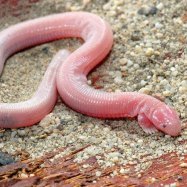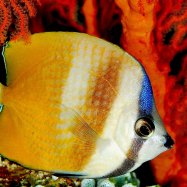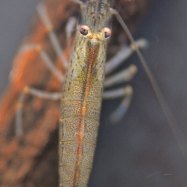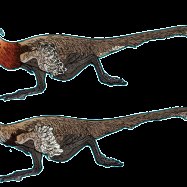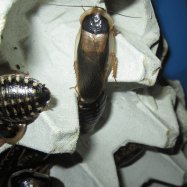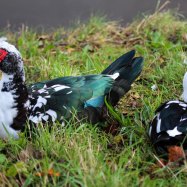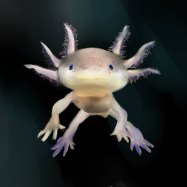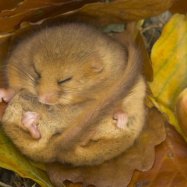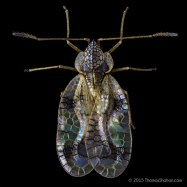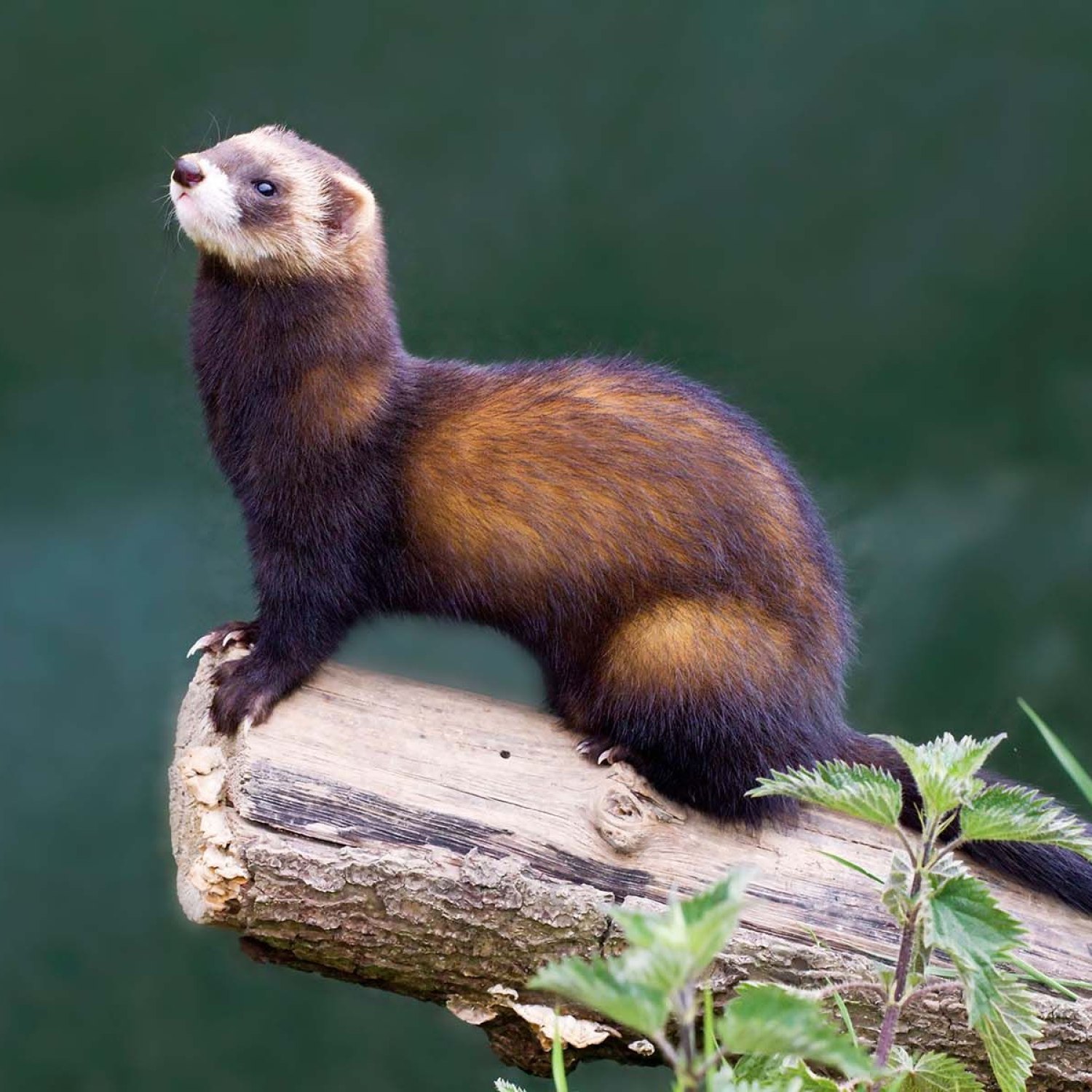
European Polecat
40-50 cm (16-20 inches)
The European polecat, a member of the Mustelidae family, is a slender and long-bodied animal that can be found in countries such as the United Kingdom, France, Germany, Poland, and Spain. With a length of 40-50 cm (16-20 inches), this carnivorous mammal is known for its beautiful fur and strong scent marking abilities. Keep an eye out for the elusive polecat on your next trip to Europe! #EuropeanPolecat #Mustelidae #wildlife
Animal Details Summary:
Common Name: European Polecat
Kingdom: Animalia
Habitat: Grasslands, forests, wetlands
The Elusive Hunter: The European Polecat
The animal kingdom is full of fascinating creatures, each with its unique characteristics and adaptations that have allowed them to thrive in their respective habitats. From the majestic lion to the tiny hummingbird, these animals never fail to pique our curiosity and leave us in awe of their capabilities.One such animal that often goes unnoticed is the European polecat, also known as Mustela putorius. This elusive and mysterious creature is a member of the Mustelidae family, which includes other weasel-like animals such as ferrets, otters, and stoats European Polecat. Despite its small size and less intimidating appearance, the European polecat is a formidable hunter with incredible instincts and skills.
In this article, we will delve into the world of the European polecat, learning about its physical features, behavior, and habitat. So let's get started on our journey to uncover the secrets of this elusive hunter.
Classification and Distribution
The European polecat is classified under the Animalia kingdom, Chordata phylum, and Mammalia class. It belongs to the Carnivora order, which includes other predators like wolves, bears, and cats. As members of the Mustelidae family, they are closely related to minks, martens, and badgers.The geographical distribution of the European polecat is primarily limited to Europe and Western Asia. It is native to European countries such as the United Kingdom, France, Germany, Poland, Spain, and many others. They are adaptable animals and can thrive in various habitats, including grasslands, forests, and wetlands, as long as there is enough food and shelter available Embolotherium.
While they are not considered an endangered species, the European polecat's population has declined in some regions due to habitat destruction, hunting, and the use of pesticides. However, they have a widespread distribution and are still found in many parts of their native range.
Physical Characteristics
The European polecat is a small animal, measuring 40-50 cm (16-20 inches) in length and weighing around 0.6-1.6 kg (1.3-3.5 lbs). They have a slender body shape, with short legs and a long tail, giving them a weasel-like appearance. Their front paws have sharp claws that help them dig and catch prey, while their hind paws have webbed toes, allowing them to swim efficiently.One of the most distinct physical features of the European polecat is its dark brown or black fur, with a white underbelly. This coloration provides excellent camouflage in their natural habitats, allowing them to sneak up on prey without being noticed. Their fur is also thick and luxurious, providing insulation in colder climates.
They have a keen sense of smell and excellent eyesight, which helps them navigate their surroundings and locate prey, even in low light conditions. Their sharp, pointed teeth and strong jaw muscles enable them to grasp and crush their prey with ease.
Hunting and Feeding Habits
The European polecat is a carnivorous animal, meaning they primarily feed on meat. They are skilled hunters and prey on a variety of small animals, including rodents, rabbits, birds, and amphibians. They are also opportunistic eaters and will scavenge for food if necessary.Their sharp claws and agility allow them to dig into burrows and catch elusive prey like mice and voles. Their hunting technique involves tracking their prey by scent, then pouncing on them with lightning-fast speed and precision. They also have the ability to climb trees in search of birds' eggs or raid bird nests.
Despite their small size, the European polecat is an apex predator in its native habitat, and their presence helps to control rodent populations, which can otherwise cause significant damage to crops and vegetation.
Behavior and Communication
The European polecat is a solitary animal, and they prefer to live and hunt alone. They are mostly nocturnal, meaning they are active at night, making it challenging to spot them in the wild. However, during breeding season, they may become more active during the day.Their elusive nature and solitary lifestyle make it challenging to study their behavior and communication. However, it is known that they use various vocalizations, including squeaks, whines, and growls, to communicate with other polecats.
One of the most intriguing behaviors of the European polecat is its musky smell. They have scent glands located near their anus, which secretes a strong musky odor. This scent is used to mark their territory and communicate with other polecats. It is also used as a defense mechanism when they feel threatened, and the smell can be quite overpowering to predators or potential threats.
Reproduction and Life Cycle
European polecats reach sexual maturity at around 9-10 months, although they may not breed until they are a year old. Their breeding season is typically between March and May, and females can have one to three litters per year, with an average litter size of 3-7 kits.The gestation period for polecats is around six weeks, after which the female gives birth to blind and helpless kits. The mother provides for her young until they are weaned at around 6-8 weeks. The kits then leave the den and start hunting for themselves, with the mother's guidance.
European polecats can live for up to three years in the wild, although they may have a shorter lifespan due to predators, diseases, and other environmental factors.
Relationship with Humans
Like many other predators, the European polecat has had a complicated relationship with humans. In the past, they were hunted for their fur, which was used in the production of fur coats and hats. However, due to the decline in their population, they have been protected in many European countries, and it is now illegal to hunt or harm them.European polecats also have a history of being mistakenly killed by farmers who mistake them for stoats or weasels, which are considered pests due to their habit of killing poultry. However, studies have shown that polecats play an essential role in keeping rodent populations in check, which can be beneficial to farmers.
In recent years, there have been efforts to reintroduce polecats into areas where they have been previously eradicated. These efforts have been largely successful, and polecats can now be found in many parts of their native distribution range.
Fun Facts about the European Polecat
- Although they are primarily solitary animals, European polecats have been known to form small groups during the breeding season.- Polecats can swim and climb trees, making them highly adaptable and skilled hunters.
- The musky smell of polecats is so strong that it can be detected up to a mile away.
- During the winter, polecats grow a thicker coat to keep them warm in the colder months.
- They have a flexible bone structure, allowing them to fit into tight spaces while hunting.
Conclusion
In conclusion, the European polecat is a fascinating and adaptable predator that often goes unnoticed in the animal kingdom. Despite their small size, they are skilled hunters and play a crucial role in maintaining the balance of their ecosystems.It is essential to continue protecting and conserving the habitats of these elusive animals to ensure their survival for future generations. As we continue to learn more about the European polecat's behavior and adaptations, we gain a deeper appreciation for this mysterious and elusive creature.

European Polecat
Animal Details European Polecat - Scientific Name: Mustela putorius
- Category: Animals E
- Scientific Name: Mustela putorius
- Common Name: European Polecat
- Kingdom: Animalia
- Phylum: Chordata
- Class: Mammalia
- Order: Carnivora
- Family: Mustelidae
- Habitat: Grasslands, forests, wetlands
- Feeding Method: Carnivorous
- Geographical Distribution: Europe, Western Asia
- Country of Origin: Europe
- Location: European countries such as the United Kingdom, France, Germany, Poland, Spain
- Animal Coloration: Dark brown or black fur with a white underbelly
- Body Shape: Slender and long-bodied
- Length: 40-50 cm (16-20 inches)
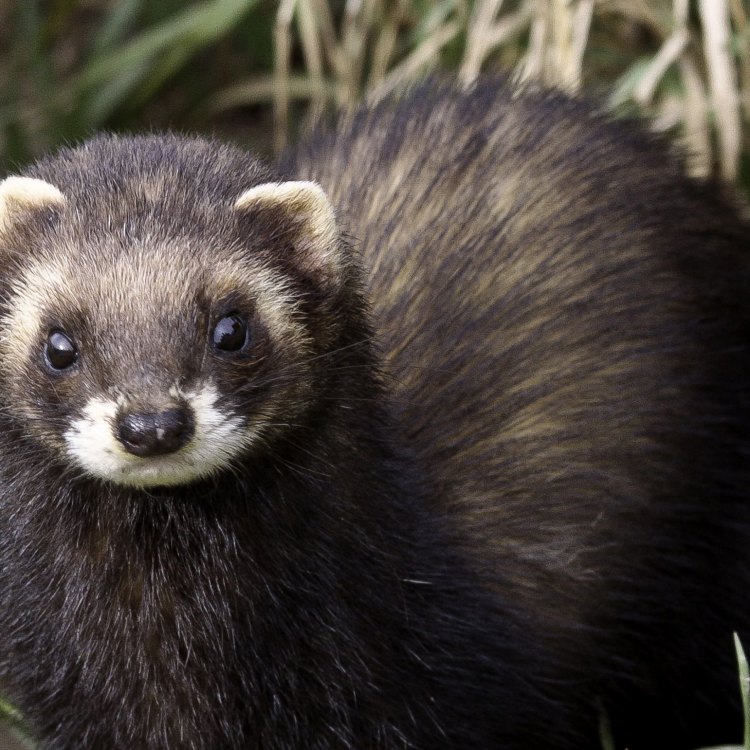
European Polecat
- Adult Size: Medium-sized carnivore
- Average Lifespan: 3-5 years in the wild
- Reproduction: Sexual reproduction
- Reproductive Behavior: Breeding season usually occurs from March to May
- Sound or Call: Vocalization includes barks, hisses, and chatters
- Migration Pattern: Non-migratory
- Social Groups: Solitary
- Behavior: Nocturnal and semi-arboreal
- Threats: Habitat loss, road accidents, hunting
- Conservation Status: Least Concern
- Impact on Ecosystem: Polecats help control rodent populations
- Human Use: Fur trapping
- Distinctive Features: Mask-like facial marking and anal scent glands
- Interesting Facts: European Polecats are the wild ancestors of domestic ferrets
- Predator: Large birds of prey and larger carnivores
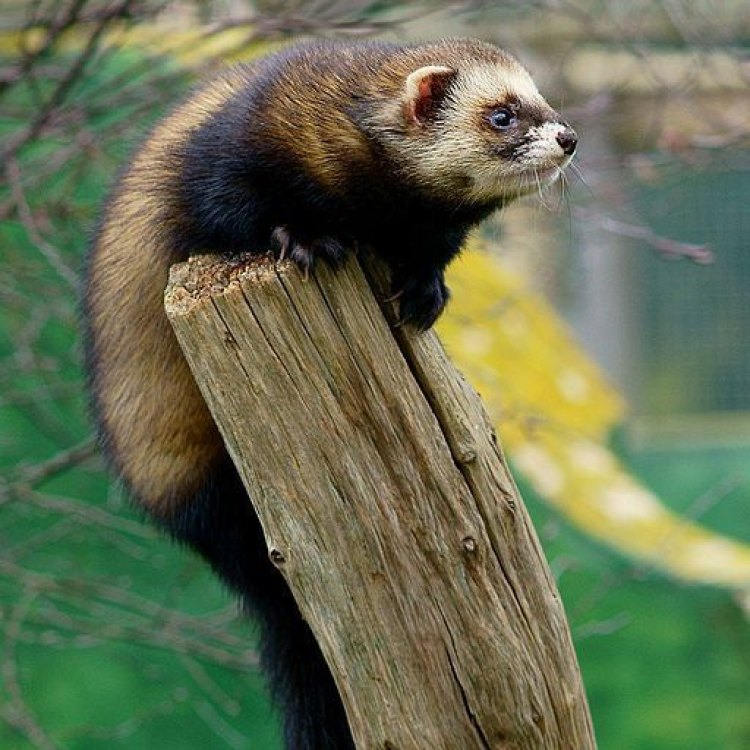
Mustela putorius
The European Polecat: A Fascinating and Misunderstood Carnivore
When you think of European wildlife, the majestic wolf, the powerful brown bear, or the agile lynx may come to mind. However, there is another predator that often goes unnoticed, the European polecat. This medium-sized carnivore may not be as well-known as its larger counterparts, but it is a fascinating and essential part of the European ecosystem.The European polecat, also known by its scientific name Mustela putorius, is a member of the Mustelidae family, which includes weasels, otters, and martens PeaceOfAnimals.Com. It is a wild animal that can be found throughout Europe, from Spain and Portugal to Russia and Scandinavia. Its range also extends into the United Kingdom, where it was once almost extinct but has made a comeback in recent decades.
Let's take a closer look at this intriguing animal and discover its unique features and behavior.
Size and Reproduction
European polecats are medium-sized carnivores, weighing between 2-4 pounds and measuring around 20 inches in length. Females tend to be smaller than males, and their size can also vary depending on their habitat and food availability.As with most carnivores, the European polecat reproduces through sexual reproduction. Breeding season typically occurs from March to May, and females give birth to an average of three to six kits after a 42-day gestation period. The kits, or baby polecats, are born blind and helpless and are entirely reliant on their mother for survival.
Behavior and Social Groups
European polecats are solitary animals and are most active at night, making them mostly nocturnal Earthworm. They are also semi-arboreal, meaning they are comfortable living and hunting both on the ground and among trees and bushes. Their semi-arboreal behavior makes them excellent climbers, allowing them to climb trees and escape from predators.During the breeding season, males and females may come together for mating, but otherwise, polecats live and hunt alone. They are territorial animals and will defend their home range and food sources from other polecats.
Distinctive Features
One of the most distinctive features of the European polecat is its mask-like facial marking. These markings are dark patches of fur around the eyes and muzzle, giving the polecat a masked appearance. This feature is also where they get their name, as the word "polecat" comes from "polecatte," an old French term used to describe a "vendor of musk," referring to their anal scent glands.Threats and Conservation Status
The European polecat faces various threats in the wild. Habitat loss, as well as road accidents and hunting, pose significant risks to their survival. Polecats are also vulnerable to poisoning from rodenticides, which are used by humans to control rodent populations.Despite these threats, the European polecat is currently listed as "Least Concern" on the IUCN Red List of Threatened Species. This conservation status is attributed to the polecat's widespread population and adaptability to different habitats.
Impact on the Ecosystem
As with any predator, the European polecat plays a vital role in maintaining the balance of its ecosystem. Polecats primarily feed on small mammals, such as rodents, rabbits, and hares, helping to keep their populations in check. This control of rodent populations is beneficial to farmers and landowners, as it reduces the risk of crop damage and the spread of disease.Human Use and Interesting Facts
Humans have had a long history with European polecats, both as predators and companions. Polecats' fur has been used for centuries in the fur trade, and they were heavily hunted during the 19th and 20th centuries, leading to a significant decline in their population. However, in recent years, their numbers have increased due to conservation efforts and a decrease in fur trapping.Interestingly, the European polecat is also the wild ancestor of domestic ferrets. Ferrets were bred from polecats for hunting purposes, and some domestic ferrets have been released or escaped, breeding with their wild counterparts, creating hybrids.
Predators
While European polecats may seem formidable, they do have natural predators. Large birds of prey, such as owls and eagles, may hunt polecats, especially young or injured individuals. Larger carnivores, such as foxes, badgers, and wildcats, may also prey on polecats.In Conclusion
The European polecat is a fascinating and often misunderstood animal that plays a crucial role in its ecosystem. Despite facing various threats, they have shown resilience and are currently thriving throughout Europe. It is essential to continue to protect and conserve these creatures as they are crucial to maintaining a healthy and balanced ecosystem. So the next time you see a masked, cat-like animal, remember that it might be a European polecat, one of the unsung heroes of the European wildlife.

The Elusive Hunter: The European Polecat
Disclaimer: The content provided is for informational purposes only. We cannot guarantee the accuracy of the information on this page 100%. All information provided here may change without prior notice.

